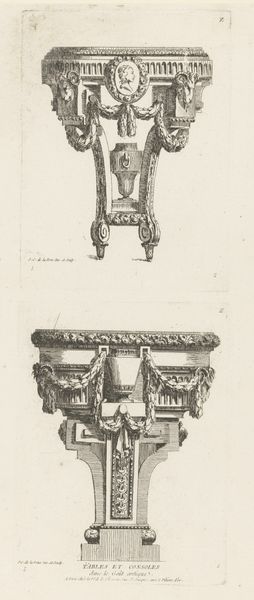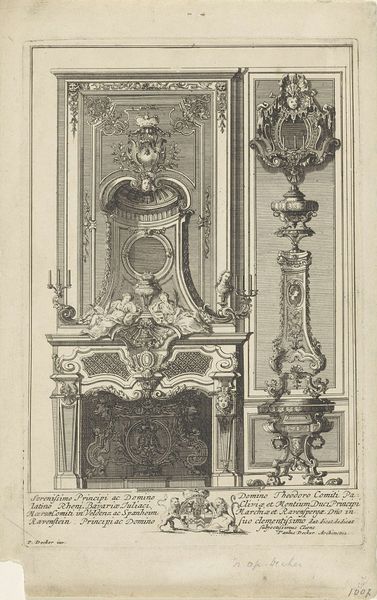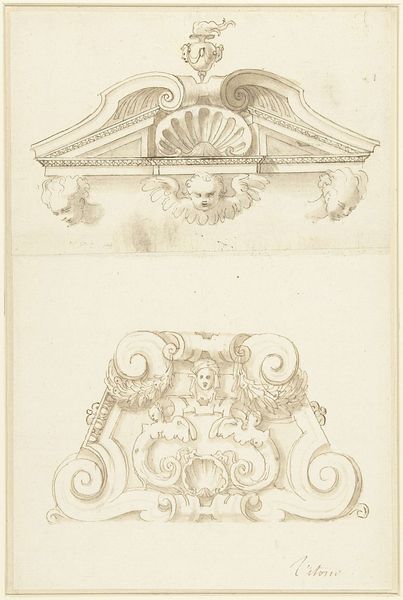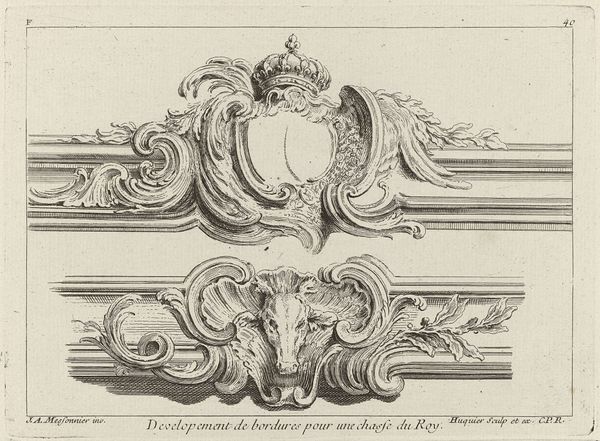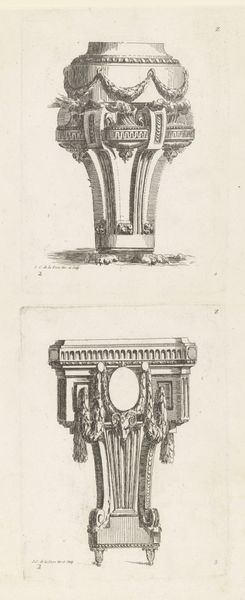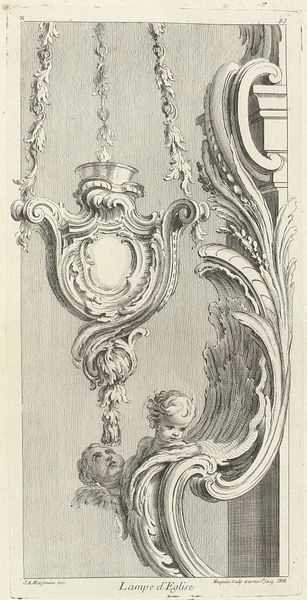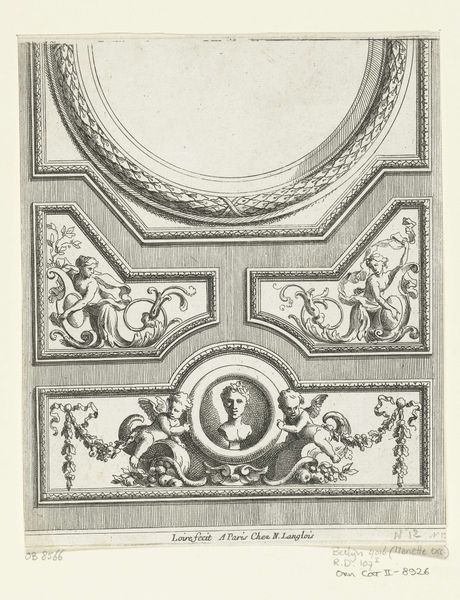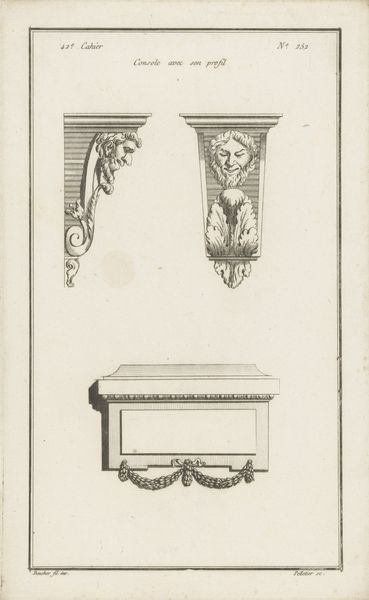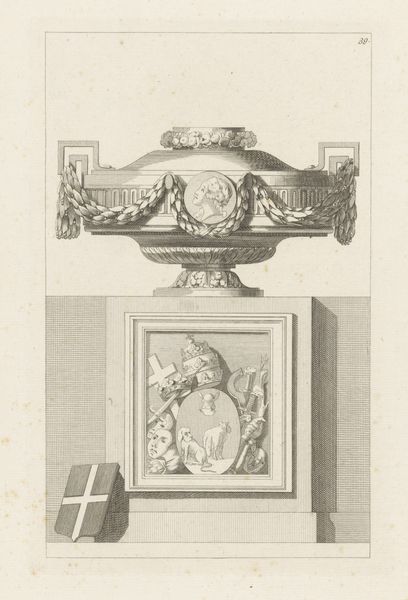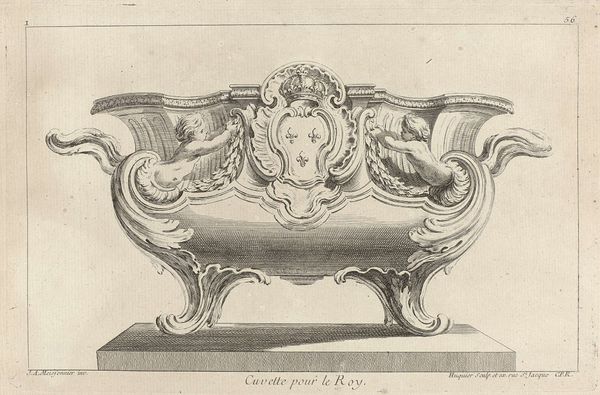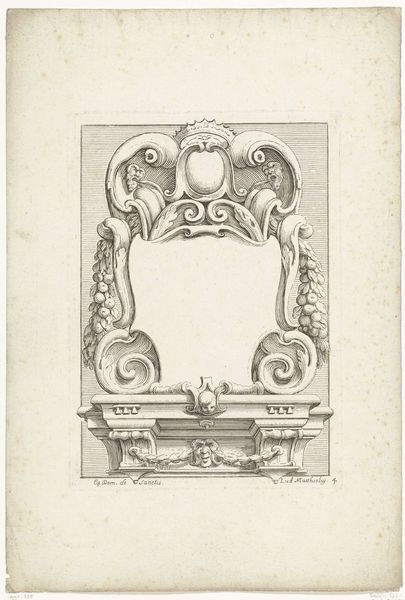
drawing, engraving
#
drawing
#
table
#
baroque
#
old engraving style
#
furniture
#
form
#
decorative-art
#
engraving
Dimensions: height 212 mm, width 158 mm
Copyright: Rijks Museum: Open Domain
Curator: We’re looking at "Ontwerp voor het onderstel van een pennanttafel," which translates to "Design for the base of a console table". Gabriel Huquier created this engraving sometime between 1738 and 1749. It’s currently held in the Rijksmuseum. Editor: My initial impression is extravagance—a purely decorative flourish frozen in ink. The lines swirl and curve, almost defying any structural logic. Curator: Precisely! Note the dramatic use of line – the rhythmic, almost musical, quality in the play of convexity and concavity. Huquier has skillfully used the graphic language of Baroque ornamentation to create the design. It’s pure, distilled form. The contrast between light and shadow is also remarkably well done, adding volume to the forms. Editor: Considering the period, this piece seems embedded within the grand schemes of royal courts and wealthy patrons. I wonder how many such elaborate designs actually transitioned from paper to reality and populated the extravagant interiors of the elite. It reflects their status. The over-the-top ornamentation sends a loud message about wealth. Curator: Yes, and the engraving process itself is relevant. The printmaking allowed for wider dissemination of such designs. It served both as a promotional tool for the artist and a pattern book for other artisans. One can imagine cabinetmakers across Europe referencing these prints for inspiration or direct reproduction. Editor: Indeed! The Baroque, at its peak, manifested the aspirations of the Church and the Aristocracy—the design is inherently intertwined with the complex social structures that patronized it, which gives another perspective when examining these forms in relation to the court spectacle of Louis XV. Curator: Agreed, that is a compelling point; by understanding that relation, one has access to multiple readings, the formal and historical enrich one another in ways that open further doors of inquiry into this form and artwork. Editor: In the end, this reminds us that even seemingly 'pure' design never exists in a vacuum. It reflects specific cultural aspirations, anxieties, and power dynamics. Curator: And even in monochrome, the elegance still shines.
Comments
No comments
Be the first to comment and join the conversation on the ultimate creative platform.

